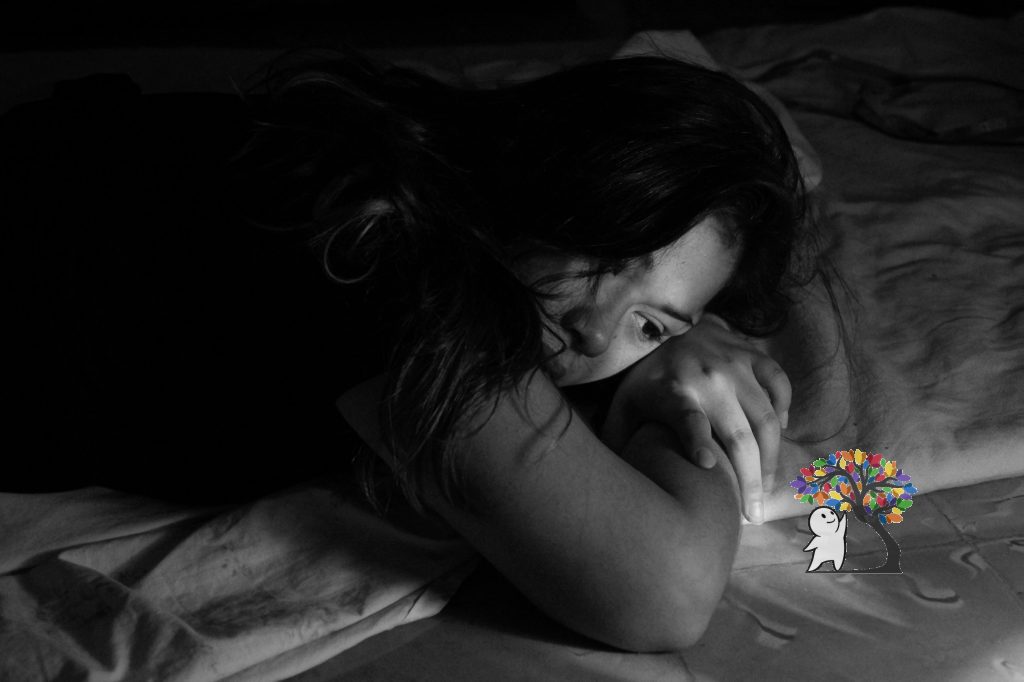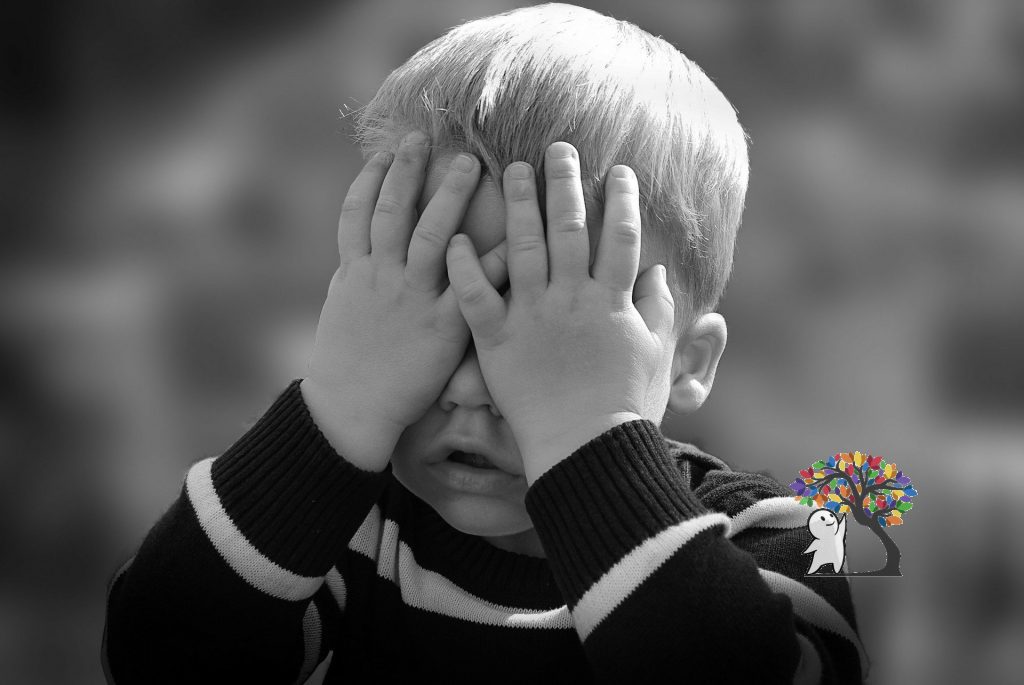8 Facts You Need to Know About Bipolar Disorder

Sometimes, there’s more that goes on beneath the surface of a quirky personality than just allowing the inner creative child to live. Famous stand-up comedian and actor Robin Williams had the amazing talent of bringing joy in others’ lives with his smart, engaging ideas. While his wild, roaming creativity was a gift to the world, it also killed. At the age of 63, Williams committed suicide on August 11, 2014.
Many media reporters have concluded it was bipolar disorder, also known as manic-depression, that led to Williams’ suicide. The creativity in mania allows the mind to run off in a million brilliant directions, but the symptoms can go unnoticed, often being mistaken for a funny personality with artistic tendencies. It’s important to be aware of what manic-depression is and how it affects the individual. Psych2Go shares with you 8 facts you need to know about bipolar disorder:

1. Bipolar disorder, also known as manic-depressive illness, is a mental disorder that causes unusual shifts in mood, energy, and activity levels that affects one’s ability to perform daily tasks.
The mood ranges from periods of elated, energized behavior (manic episodes) to extreme periods of sadness and hopelessness (depressive episodes). Less severe manic periods are called hypomanic episodes. People with bipolar disorder experience these highs and lows like an emotional roller coaster with no room for a quick break. It can be exhausting and take a lot from their health that affects their relationships and ability to make decisions and carry out tasks both at home and work.

2. There are four basic types of bipolar disorder and they are all identified by their changes in mood, energy, and activity levels.
Bipolar I disorder occurs when manic episodes last at least 1 week or when they are so severe that the person needs to go to the hospital for immediate care. The depressive episodes that occur will usually last at least 2 weeks. People who experience bipolar I disorder may simultaneously experience manic and depressive symptoms as well.
Bipolar II disorder occurs when there is a pattern of depressive episodes and hypomanic episodes experienced but not manic episodes.
Cyclothymic disorder, also known as cyclothymia, occurs when one experiences many hypomanic episodes and depressive episodes that last at least 2 years as an adult. For children and adolescents, the time span is 1 year.
Other specified and unspecified bipolar and related disorders may have symptoms related to bipolar disorder that do not match the three categories listed above.

3. During manic episodes, people may experience:
- Having a lot of energy
- Feeling “jumpy” or “wired”
- Having difficulty sleeping
- Being more active than usual
- Being agitated, irritable, or “touchy”
- Talking really fast about many topics
- Thoughts that run quickly through their heads
- Optimism towards being able to do everything all at once
- Doing risky things, such as over-spending their money or having unsafe sex

4. During depressive episodes, people may experience:
- Having very little to no energy
- Being less active than usual
- Having difficulty sleeping, or they may be sleeping too much
- Enjoying their interests and hobbies less
- Constant worrying and feelings of emptiness
- Difficulty concentrating
- Being forgetful
- Eating too much or not enough
- Feeling exhausted or tired all the time
- Thoughts of death or suicide

5. People with bipolar disorder may have other illnesses as well.
Other mental disorders people may experience along with manic depression are: anxiety, ADHD, substance abuse, and eating disorders. It’s also easy for bipolar disorder to be pushed under the rug if these other mental disorders are noticed more. For instance, when people misuse drugs and alcohol that affect their relationships, work, and family life, close loved ones may not see it as a symptom of bipolar disorder.

6. There is no single cause for bipolar disorder, but rather multiple factors, such as family history, genetics, and the brain structure and functioning that contribute to one’s risk of experiencing manic-depression.
Bipolar disorder tends to run in the family. Children with a parent or sibling diagnosed with bipolar disorder are more likely to develop the mental disorder than children from a family that doesn’t have a history of bipolar disorder. But, it is also important to bring attention to the fact that many people with a family history of the mental disorder do not develop it.
Researchers have suggested that there are also specific genes that are more likely to cause the development of bipolar disorder over others. However, this isn’t always the case because there have been studies done on twins and it has been shown that one twin developed bipolar disorder while the other one didn’t since identical twins share the same genes.
Studies have also shown that the brains of people with bipolar disorder may differ from the brains of people who don’t have it. Being aware of these differences in the brain structure and its functions have helped researchers understand bipolar disorder better and in predicting which types of treatment will be more effective for those with manic-depression.

7. An effective treatment plan for bipolar disorder usually involves both medication and psychotherapy.
People with bipolar disorder often take medication, such as mood stabilizers or antidepressants that are prescribed by their doctor. In addition, they use psychotherapy, otherwise known as “talk therapy,” in which they communicate with a psychologist about what is bothering them in order to figure out ways to react better and overcome those obstacles.

8. Depending on the severity of the bipolar disorder, other treatment options include electroconvulsive therapy, sleep medication, and keeping a life chart.
Electroconvulsive therapy (ECT) may be considered for people with severe bipolar disorder who have tried other types of treatment that don’t work for them. Side effects of ECT may include confusion, disorientation, and memory loss. It’s important to talk to a doctor about the benefits and risks of ECT before considering it.
Sleep medication is also often helpful to people with bipolar disorder who have difficulty sleeping. Keeping a life chart is a possibility, too, when people with bipolar disorder want to talk more openly about their treatment options with their doctor. A life chart allows one to record daily mood symptoms, sleep patterns, and life events that both the doctor and patient can refer to. To figure out which treatment is most suitable for you, it’s important to talk to a doctor about these options.
Do you find these facts about bipolar disorder helpful? Leave a comment down below!
References:
Bipolar Disorder. (2016, April). Retrieved September 28, 2017, from nimh.nih.gov
Ghaemi, N. (2014, August 13). Not “Depression”: Manic-Depression and Robin Williams. Psychology Today. Retrieved September 28, 2017.




[…] you enjoyed this article, then you may also like 8 Facts You Need to Know About Bipolar Disorder or 10 Ways to Deal with Anxiety in School and What Teachers Need to […]